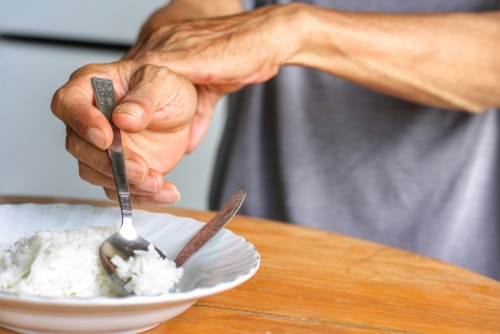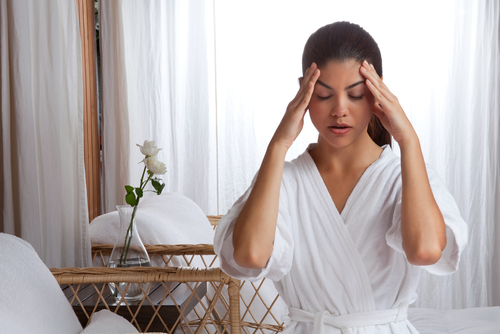
The Best Massages for Stress Relief
June 27, 2023
Daily Stress Management with Simple Self-Massage
August 24, 2023Reflexology and Relaxation Techniques for Your Feet
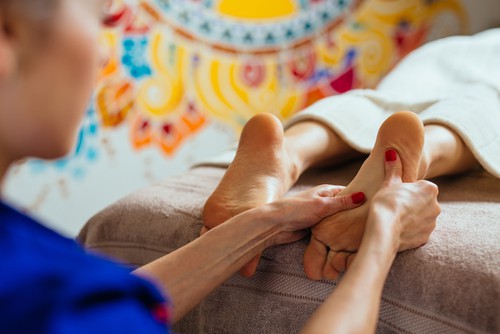
Reflexology and Relaxation Techniques for Your Feet
Reflexology and Relaxation Techniques for Your Feet. Taking care of our feet is essential for our overall well-being, yet it is often neglected.
By understanding the principles of reflexology and incorporating relaxation techniques into our daily routines, we can experience numerous benefits for our physical and mental health.
Read on – Reflexology and Relaxation Techniques for Your Feet:
Importance of Foot Care for Overall Wellbeing
Our feet are the foundation of our body, carrying us through our daily activities. However, they are frequently stressed and strained, leading to various foot-related issues.
Neglecting foot care can result in discomfort, pain, and even more severe problems. Therefore, it is crucial to give our feet the attention they deserve to maintain overall well-being.
Now, let’s dive into the details!
Understanding Reflexology
According to reflexology principles, the feet are considered microcosms of the body, with reflex points mirroring various organs and systems.
By stimulating these points through massage or pressure, practitioners aim to improve blood circulation, relieve tension, and promote the body’s natural healing processes.
The feet act as a map of the body, with different areas representing distinct organs. By working on these reflex points, practitioners can address imbalances and promote healing in corresponding body areas.
Basics of Foot Reflexology
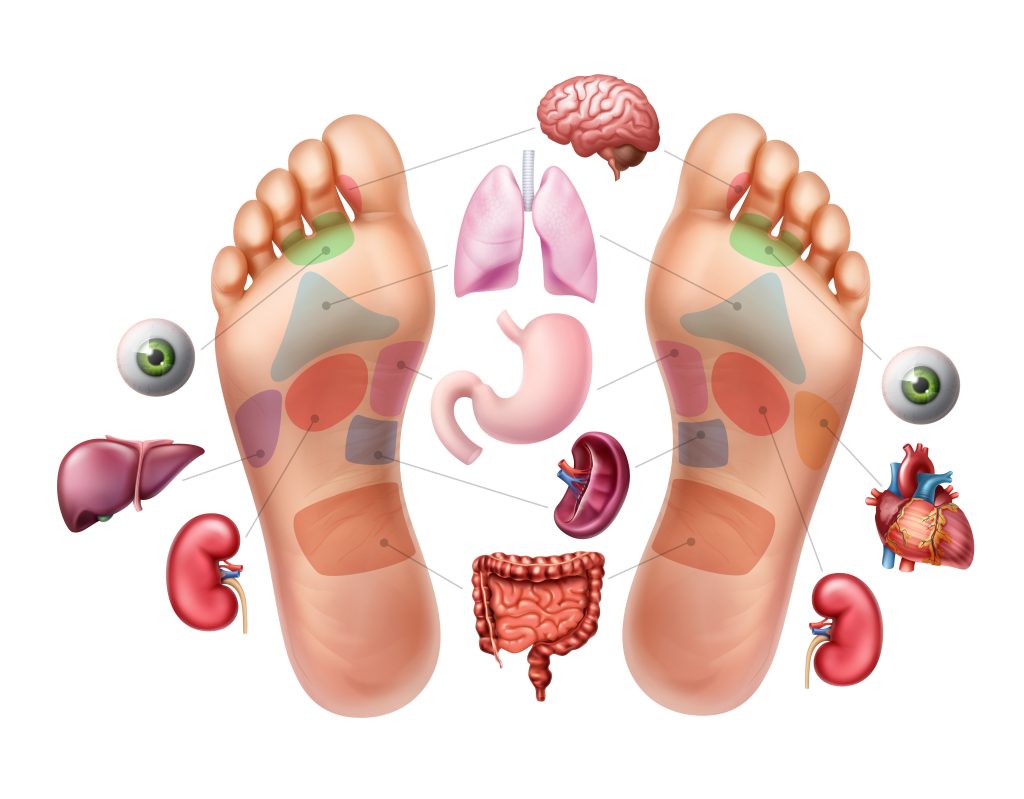
Key Reflex Points on the Feet and What They Correspond To
A crucial aspect of foot reflexology is understanding the location and significance of key reflex points on the feet. Here are some essential reflex points and their corresponding body parts:
- Toes: The tips of the toes are believed to be connected to the head and brain.
- Arch: The arch area is associated with the digestive system.
- Heel: The heel reflects the lower back and pelvic region.
- Inner Foot: The inner foot is believed to be linked to the spine.
- Outer Foot: The outer foot corresponds to the arms and shoulders.
Techniques and Tools Used in Foot Reflexology
Practitioners use various techniques to apply pressure to the reflex points, such as thumb-walking, finger pressure, and circular movements. The amount of pressure applied depends on individual preferences and sensitivities.
In a professional reflexology session, a reflexologist may use specialized tools, such as wooden or rubber implements, to precisely stimulate the reflex points. However, using the fingers and thumbs is sufficient for self-reflexology at home.
Safety Considerations and Contraindications
While reflexology is generally considered safe for most individuals, there are specific contraindications and safety considerations to be aware of:
- Pregnancy: Pregnant women should consult their healthcare provider before undergoing reflexology, as certain reflex points can potentially stimulate contractions.
- Injuries and Infections: If you have foot injuries, open wounds, or infections, avoid reflexology until the condition has healed.
- Foot Conditions: Individuals with certain foot conditions, such as fractures, gout, or plantar fasciitis, should avoid reflexology or seek guidance from a medical professional before proceeding.
DIY Reflexology Techniques for Home
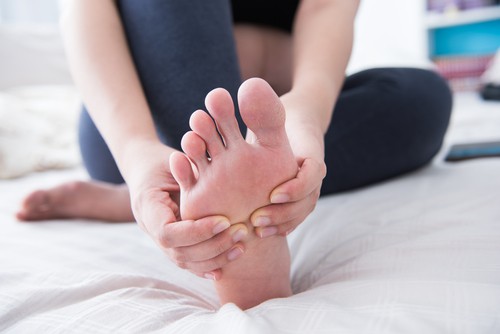
How to Prepare for a Self-Reflexology Session
Before beginning a self-reflexology session at home, creating a calm and relaxing environment is essential.
Find a comfortable chair, sit on a cushioned surface, and ensure your feet are clean and dry. You may also want to use a foot cream or oil to enhance the massage experience.
Step-by-Step Guide to a Basic Foot Reflexology Routine
Here’s a step-by-step guide to performing a basic foot reflexology routine at home:
- Relaxation: Begin by taking a few deep breaths to relax your mind and body. Close your eyes and visualize positive energy flowing through your feet.
- Warm-Up: Gently warm up your feet by rubbing them between your hands or using a warm towel.
- Toe Stimulation: Apply gentle pressure to each toe, starting from the big toe and moving towards the pinky toe. Use circular motions to stimulate the entire toe.
- Ball of Foot: Apply pressure to the ball of your foot using your thumbs or knuckles. Massage in a circular motion, covering the entire area.
- Arch Massage: Use your thumbs to massage the arch of your foot in a back-and-forth motion. Pay attention to any tender areas and apply gentle pressure.
- Heel Massage: Massage the heel of your foot using your thumbs or the palm of your hand. Apply firm but comfortable pressure.
- Inner and Outer Foot: Massage your foot’s inner and outer edges using your thumbs. Use circular motions to cover these areas thoroughly.
- Relaxation: Finish the session with a few minutes of gentle strokes and relaxation techniques.
Finding a Professional Reflexologist
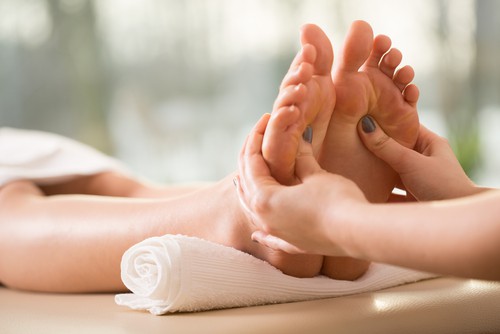
What to Look for in a Professional Reflexologist
When seeking a professional reflexologist, consider the following factors:
- Credentials: Look for a certified reflexologist with appropriate training and credentials from a reputable institution.
- Experience: Inquire about the practitioner’s experience and how many years they have practiced reflexology.
- Reviews and Testimonials: Check online reviews and testimonials to gauge the experiences of previous clients.
- Communication: Choose a reflexologist who communicates clearly and makes you feel comfortable during the session.
What to Expect During a Professional Reflexology Session
During a professional reflexology session, the reflexologist will begin by assessing your medical history and foot health. They will then proceed with the reflexology techniques, targeting specific reflex points on your feet. The pressure applied will be adjusted according to your comfort level.
Depending on your preferences and needs, the session typically lasts between 30 to 60 minutes. Throughout the session, you should feel a sense of relaxation and relief from stress.
Regularity and Frequency of Reflexology Sessions for Optimal Results
For general wellness and relaxation, scheduling a reflexology session every 2 to 4 weeks can be beneficial.
More frequent sessions may be recommended if you have specific health concerns or conditions. It is essential to communicate with your reflexologist and follow their advice regarding the optimal frequency of sessions.
Relaxation Techniques for Feet
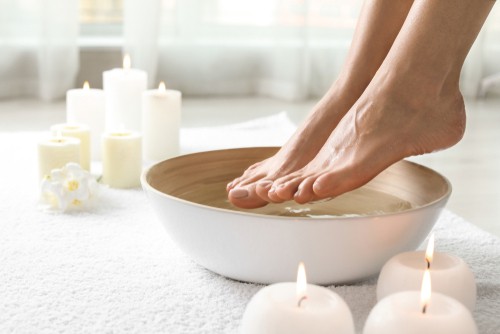
Importance of Relaxation for Foot Health
Relaxation techniques are essential for foot health, as they help alleviate tension, reduce stress, and improve circulation. By incorporating relaxation practices into our daily routine, we can enhance the overall well-being of our feet and, consequently, our entire body.
Simple Foot Stretches and Exercises
Regular foot stretches and exercises can keep the muscles and ligaments in the feet flexible and strong. Here are some simple exercises to try:
- Toe Stretch: Sit with your feet flat on the floor and your toes pointing forward. Spread your toes wide and hold for a few seconds before releasing.
- Towel Stretch: Sit with your legs extended straight in front of you. Place a towel around the ball of one foot and gently pull it towards you, stretching your calf muscles.
- Ankle Circles: While seated or lying down, lift one foot off the ground and rotate your ankle in a circular motion. Repeat in both directions.
Use of Warm Soaks, Massages, and Relaxation Tools
Incorporating warm foot soaks and massages into your routine can enhance foot relaxation. Try these methods for a soothing experience:
- Warm Soak: Fill a basin with warm water and add Epsom salts or essential oils. Soak your feet for 10-15 minutes to relieve tension and promote relaxation.
- Self-Massage: Apply gentle pressure to your feet using your hands or a massage tool. Use circular motions and focus on the reflex points for additional benefits.
- Foot Rollers: Foot rollers are excellent relaxation tools that can help stimulate reflex points and ease tension in the feet.
Foot Care for Relaxation
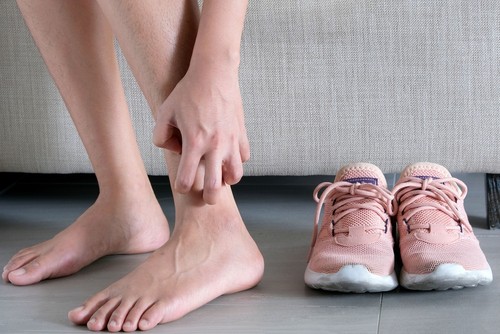
The Role of Good Footwear in Foot Relaxation
Choosing appropriate footwear is crucial for foot relaxation and overall foot health. Opt for shoes that provide proper support, cushioning, and adequate space for your toes to move freely. Avoid high heels and overly tight shoes, as they can lead to discomfort and foot issues.
Hydration and Nutrition for Foot Health
Staying hydrated is essential for foot health, as it helps maintain optimal circulation and prevents issues like dry, cracked skin.
Additionally, incorporating a balanced diet rich in vitamins and minerals can promote foot health and overall well-being.
Dealing with Common Foot Issues (Calluses, Bunions, etc.)
If you experience common foot issues like calluses, bunions, or corns, it is essential to address them promptly. Consult with a podiatrist or healthcare professional to determine the best course of action for treatment and prevention.
The Impact of Reflexology and Foot Relaxation on Overall Health
Reflexology, Relaxation, and Stress Management
Reflexology and foot relaxation techniques have shown promise in reducing stress and promoting relaxation. By targeting specific reflex points on the feet, reflexologists aim to induce a state of deep relaxation, which can help alleviate stress and anxiety.
Reflexology and Pain Management
Many individuals have reported relief from various types of pain through regular reflexology sessions. While more research is needed to understand the mechanisms behind this pain relief fully, reflexology’s calming effects may play a role in reducing pain perception.
Reflexology and Improvement in Bodily Functions
Some studies suggest reflexology can positively influence bodily functions, such as digestion, sleep patterns, and hormonal balance. Reflexologists aim to promote better overall functioning of the body’s systems by stimulating specific reflex points.
FAQs
Can Reflexology Help with Specific Health Issues?
Reflexology is considered a complementary therapy that may relieve various health issues. However, it is essential to consult with a healthcare professional for specific medical concerns and not rely solely on reflexology as a treatment.
Is Foot Reflexology Painful?
Foot reflexology is generally not painful. The pressure applied should be firm but comfortable. However, individual sensitivities may vary, and you should communicate with the reflexologist if you experience any discomfort during the session.
How Often Should I Practice Foot Relaxation Techniques?
Practicing 10-15 minutes daily or a few times a week for self-reflexology at home can be beneficial. Professional reflexology sessions’ frequency may vary depending on individual needs and goals.
Are There Risks Associated with Reflexology?
Reflexology is generally safe for most individuals. However, pregnant women, individuals with certain foot conditions, and those with injuries or infections should exercise caution and seek guidance from a medical professional.
Can I Practice Reflexology on Other Parts of the Body?
While reflexology is primarily focused on the feet, similar principles can be applied to other parts of the body through techniques like hand reflexology and ear reflexology.
Reflexology and Relaxation Techniques for Your Feet – Conclusion
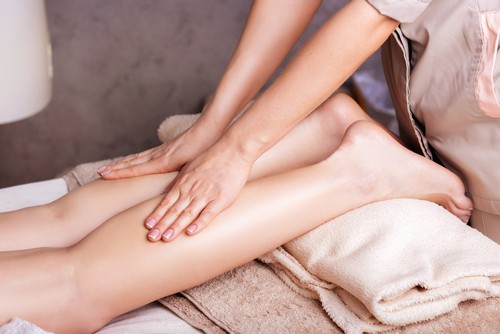
In conclusion, reflexology and relaxation techniques for the feet offer numerous benefits for overall well-being.
By understanding the principles of reflexology and incorporating regular foot care and relaxation practices into our daily routines, we can enhance our physical and mental health.
The benefits of reflexology and foot relaxation include stress reduction, pain relief, improved circulation, and enhanced bodily functions.
These practices can also promote relaxation, alleviate tension, and foster a sense of balance and harmony.
Integrating reflexology and foot relaxation techniques into a holistic wellness routine can enhance the overall quality of life. Individuals can experience improved physical and mental well-being by prioritizing foot health and relaxation.
We encourage readers to explore the world of reflexology and foot relaxation further. Whether through self-reflexology at home or seeking the expertise of a professional reflexologist, incorporating these practices into your life can lead to a healthier and more balanced existence.
In summary, by adopting a holistic approach to foot care and relaxation, individuals can experience the transformative benefits of reflexology and achieve an improved sense of overall well-being. Embrace the journey towards healthier feet and a more relaxed and balanced you.
Get started today and embark on a path of wellness through the ancient art of reflexology and relaxation for your feet. Contact us today!


